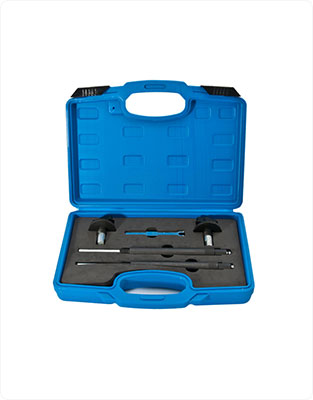There are several common sensor types that may require the use of a sensor socket set for installation or removal. These include:
Oxygen sensors (O2 sensors) - These sensors are commonly located in the exhaust system of a vehicle and are used to monitor the amount of oxygen in the exhaust gases.
Oil pressure sensors - These sensors are typically located near the oil filter or oil pump and are used to monitor the oil pressure in the engine.
Temperature sensors - There are several types of temperature sensors, including coolant temperature sensors, intake air temperature sensors, and ambient air temperature sensors. These sensors are used to monitor the temperature of various components in the engine or other systems.
Knock sensors - These sensors are used to detect engine knock or detonation and are typically located on the engine block or cylinder head.
Camshaft position sensors - These sensors are used to monitor the position and speed of the camshaft and are typically located near the camshaft or timing belt.
Crankshaft position sensors - These sensors are used to monitor the position and speed of the crankshaft and are typically located near the crankshaft pulley or harmonic balancer.
These are just a few examples of the many types of sensors that may require a sensor socket set for installation or removal. It's important to consult the vehicle or machinery's manual or a qualified mechanic for specific information on the location and type of sensors used in your application.
Certainly! Here are some additional details about each of the sensor types I mentioned:
Oxygen sensors (O2 sensors): These sensors are typically located in the exhaust system of a vehicle, both upstream and downstream of the catalytic converter. They measure the amount of oxygen in the exhaust gases and send this information to the engine control module (ECM). The ECM uses this information to adjust the air/fuel mixture to ensure optimal engine performance and reduce emissions.
Oil pressure sensors: These sensors are used to monitor the oil pressure in the engine. Low oil pressure can indicate a problem with the oil pump, oil filter, or other components. High oil pressure can indicate a restriction in the oil passages or other issues.
Temperature sensors: There are several types of temperature sensors, including coolant temperature sensors, which are used to monitor the temperature of the engine coolant, and intake air temperature sensors, which are used to monitor the temperature of the air entering the engine. Ambient air temperature sensors may also be used to monitor the temperature of the air outside the vehicle or machinery.
Knock sensors: Knock sensors are used to detect engine knock or detonation, which can cause damage to the engine if left unchecked. The knock sensor sends a signal to the ECM, which adjusts the ignition timing to prevent knock.
Camshaft position sensors: These sensors are used to monitor the position and speed of the camshaft, which controls the opening and closing of the engine's valves. The ECM uses this information to adjust the fuel injection and ignition timing for optimal engine performance.
Crankshaft position sensors: These sensors are used to monitor the position and speed of the crankshaft, which drives the engine's pistons. The ECM uses this information to determine the engine's firing sequence and adjust the fuel injection and ignition timing.
Using a sensor socket set to install or remove these sensors can help prevent damage to the sensors and ensure that they are installed correctly. It's important to consult the vehicle or machinery's manual or a qualified mechanic for specific information on the location and type of sensors used in your application.
 EN
EN


















